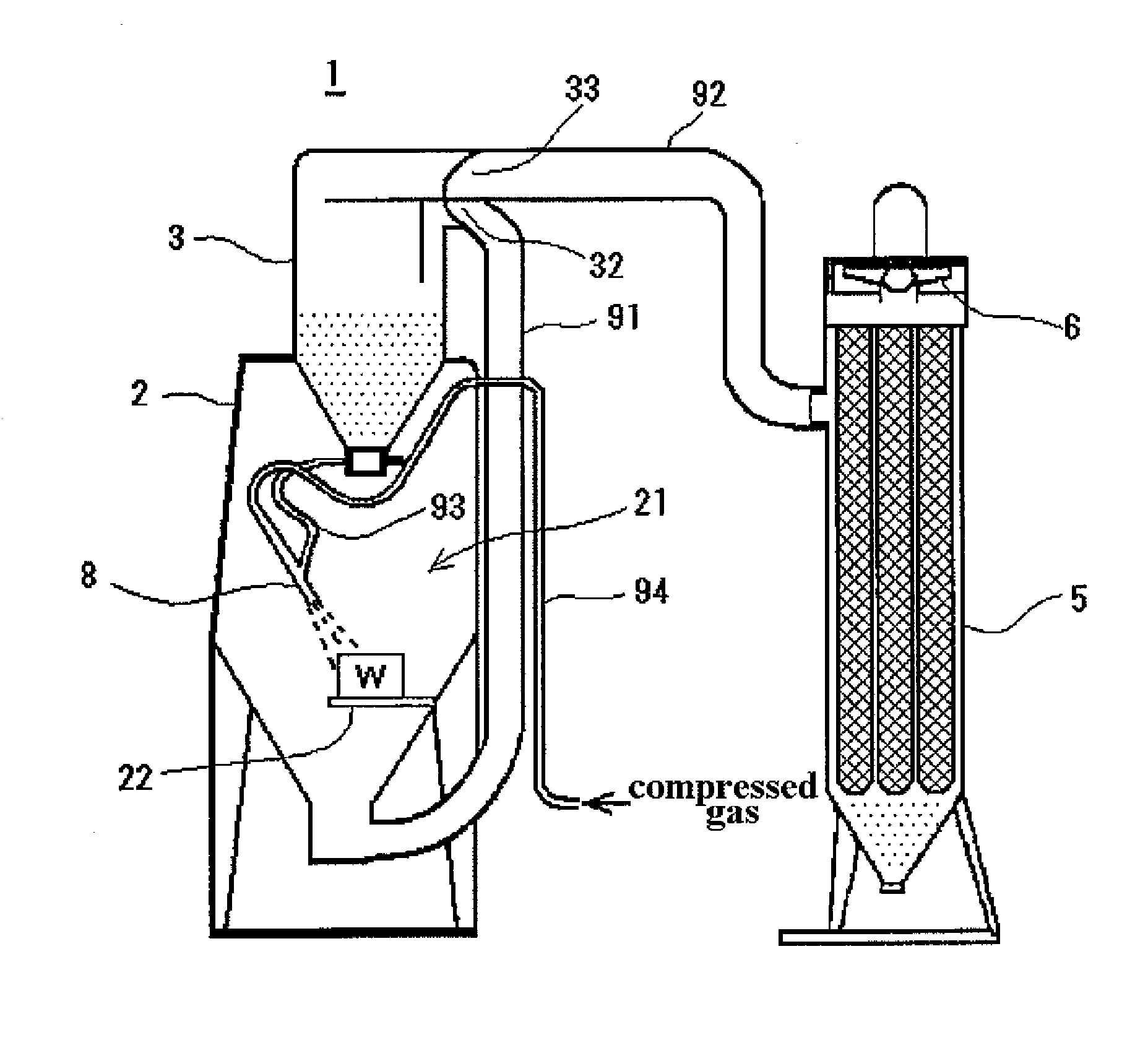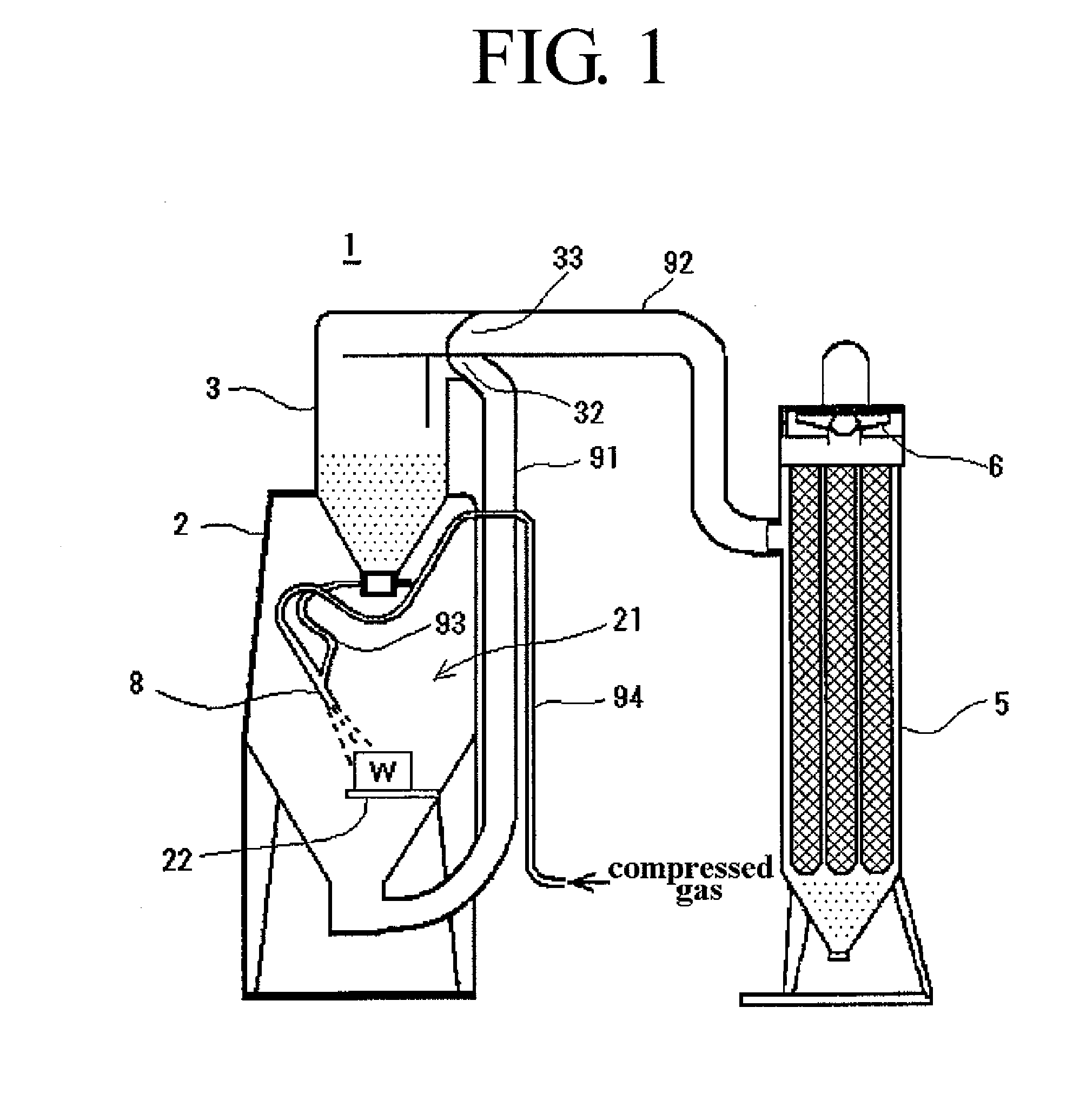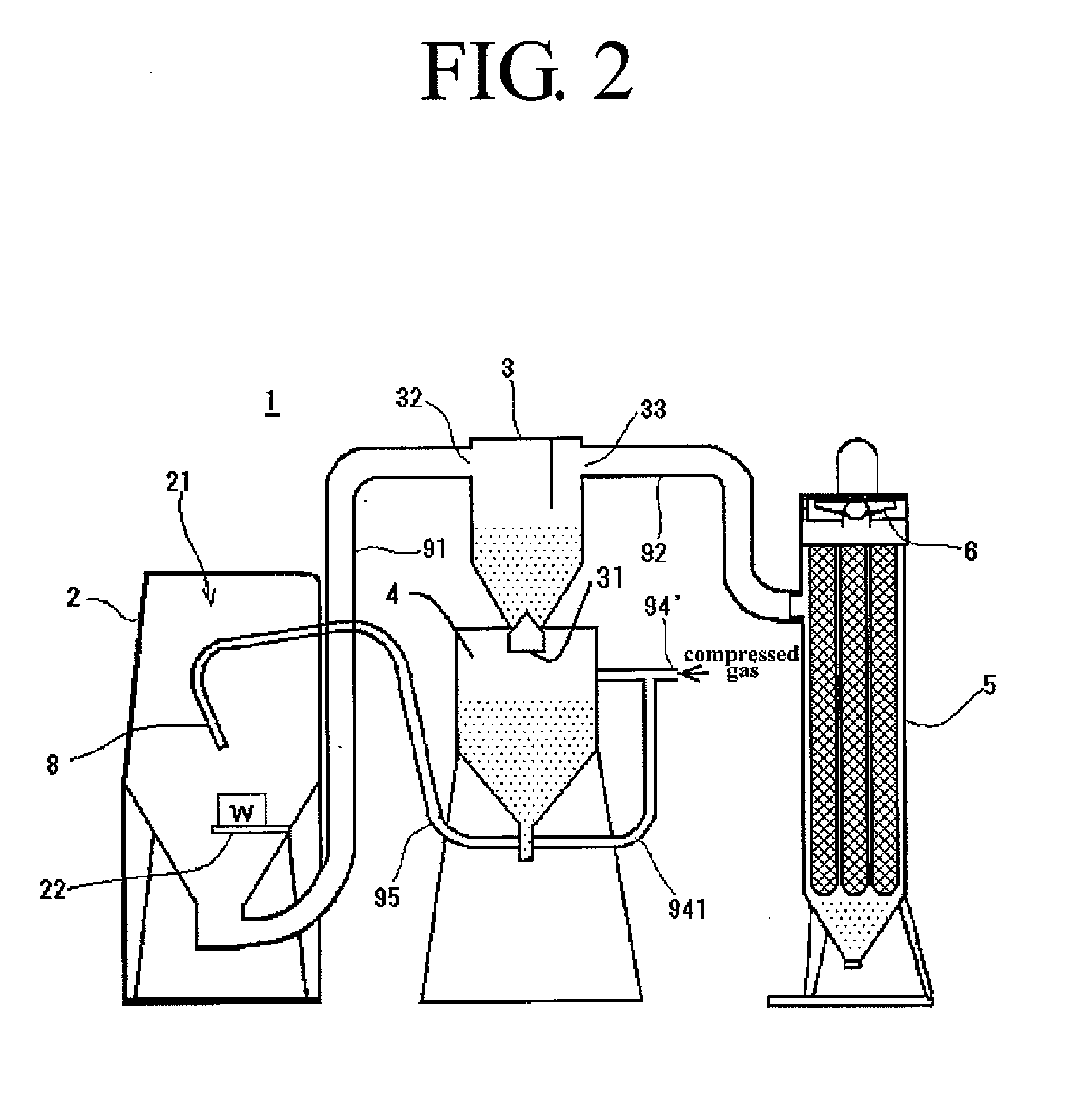Blasting method and blasting machine
a blasting machine and blasting method technology, applied in the direction of grinding machine components, grinding/polishing apparatus, manufacturing tools, etc., can solve the problems of inability to use applications or materials, forming a satin-like finish, and reducing the viscosity and elasticity of the carrier, so as to achieve low adhesiveness, maintain cutting force, and easy control of liquid volume to be merged
- Summary
- Abstract
- Description
- Claims
- Application Information
AI Technical Summary
Benefits of technology
Problems solved by technology
Method used
Image
Examples
Embodiment Construction
[0090]Embodiments according to the present invention will now be described with reference to the attached drawings.
Overall structure of a blasting machine
[0091]The overall structure of a blasting machine used for a blasting method according to the present invention will be described with reference to FIGS. 1 and 2.
[0092]A blasting machine 1 shown in FIG. 1 is a so-called “suction-type” blasting machine which includes an abrasive-supplying conduit 93 communicating with an abrasive-recovery tank 3 and a compressed-gas supply conduit 94 communicating with a compressed-gas supply source (not shown) such that the abrasive-supplying conduit 93 is combined with the compressed-gas supply conduit 94 in a blasting gun 8. With the help of negative pressure in the abrasive-supplying conduit 93 generated by a compressed gas, such as air, argon, or nitrogen (compressed air in the embodiment) introduced through the compressed-gas supply conduit 94, the abrasive from the abrasive-recovery tank 3 is...
PUM
| Property | Measurement | Unit |
|---|---|---|
| diameter | aaaaa | aaaaa |
| mean diameter | aaaaa | aaaaa |
| grain size | aaaaa | aaaaa |
Abstract
Description
Claims
Application Information
 Login to View More
Login to View More - R&D
- Intellectual Property
- Life Sciences
- Materials
- Tech Scout
- Unparalleled Data Quality
- Higher Quality Content
- 60% Fewer Hallucinations
Browse by: Latest US Patents, China's latest patents, Technical Efficacy Thesaurus, Application Domain, Technology Topic, Popular Technical Reports.
© 2025 PatSnap. All rights reserved.Legal|Privacy policy|Modern Slavery Act Transparency Statement|Sitemap|About US| Contact US: help@patsnap.com



